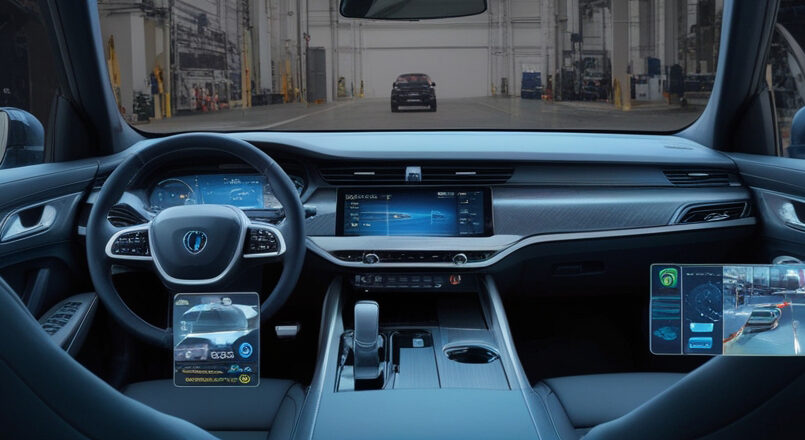From Prototyping to On-Road Testing: DeepGrid’s Approach to Autonomous Vehicle Development
The development of autonomous vehicles is a journey that requires precision, innovation, and a steadfast commitment to safety. Moving from concept to a fully functional vehicle on the road is a multi-stage process involving design, simulation, prototyping, rigorous testing, and finally, deployment.
At DeepGrid, we’ve built a streamlined approach to ensure each stage not only meets but exceeds industry standards. By leveraging cutting-edge technologies like our DGrid-SoC and combining real-world testing with advanced simulation, we are redefining the path to autonomous mobility.
In this blog, we’ll walk you through our development process, share updates on our prototype vehicles set to hit the road in January 2025, and highlight what our clients can expect next.
Step 1: Concept and Design
Every great innovation starts with a solid concept. For DeepGrid, this begins with defining the specific requirements for our autonomous driving systems, such as perception, decision-making, and control capabilities.
Designing the DGrid-SoC
At the core of our solutions is the DGrid-SoC (System on Chip), designed specifically to handle the demanding workloads of autonomous driving. This custom AI chipset integrates:
- Perception Algorithms: For processing data from cameras, LIDAR, and radar.
- Prediction Models: To anticipate the behavior of other road users.
- Decision-Making Systems: Enabling real-time route planning and safety optimization.
The DGrid-SoC is built for efficiency, scalability, and real-time performance, ensuring that it meets the needs of modern autonomous systems.
Step 2: Simulation-Driven Development
Before any hardware hits the road, we rely on advanced simulation environments to test and refine our systems. Using platforms like CARLA, we simulate millions of miles of driving in diverse environments.
Key Benefits of Simulation
- Risk-Free Testing: Simulations replicate challenging scenarios like extreme weather or heavy traffic without endangering lives or property.
- Data-Driven Insights: Each simulation run generates data to fine-tune algorithms.
- Cost and Time Efficiency: Thousands of tests can be conducted simultaneously, speeding up development cycles.
This stage allows us to validate the functionality of the DGrid-SoC and other systems under controlled yet highly realistic conditions.
Step 3: Prototyping
Simulation results feed directly into the prototyping phase. Our first-generation prototype vehicles are built to incorporate the DGrid-SoC, advanced sensors, and integrated software stacks.
What Sets Our Prototypes Apart
- Hardware-Software Integration: Ensuring seamless communication between the DGrid-SoC and onboard systems.
- Realistic Sensor Configurations: Including LIDAR, radar, cameras, and ultrasonic sensors for a 360-degree view.
- Modular Design: Allowing for easy updates as new features or improvements are developed.
By January 2025, our first fleet of prototypes will be ready to transition from labs to the roads, a milestone that underscores our commitment to innovation.
Step 4: On-Road Testing and Validation
Prototypes are only the beginning. The next step is to test these vehicles in real-world conditions to validate their performance. This stage focuses on:
- Safety and Reliability: Ensuring vehicles can navigate complex environments without failures.
- ADAS Feature Validation: Testing capabilities like lane-keeping, adaptive cruise control, and collision avoidance.
- Compliance with Regulations: Meeting global safety standards and legal requirements for autonomous driving systems.
Our approach combines closed-course testing for controlled scenarios and on-road testing to capture real-world variability.
What’s Next: January 2025 and Beyond
As our prototype vehicles prepare for their first road tests in January 2025, we’re excited to share some early insights into our development process:
Key Milestones Achieved So Far
- Simulation Success: Millions of miles simulated with a focus on urban, highway, and adverse weather scenarios.
- Hardware Readiness: The DGrid-SoC has passed all initial validation tests, showcasing its capability to handle high-speed data processing and decision-making.
- Client Engagement: Collaborations with OEMs and industry partners are underway to align our technology with real-world applications.
Looking Ahead
- Scaled Testing: Expanding our prototype fleet for larger-scale trials.
- Enhanced Features: Adding new capabilities like V2X (vehicle-to-everything) communication and predictive maintenance systems.
- Market Deployment: Aiming to bring production-ready systems to market by 2027.
Why Choose DeepGrid?
Our comprehensive approach ensures that every stage of development is guided by innovation, safety, and efficiency. Here’s why clients trust us:
- Custom Solutions: Tailored hardware and software built to meet the unique needs of autonomous systems.
- Robust Testing Protocols: Combining the power of simulation and real-world trials for unmatched reliability.
- Future-Ready Technology: The DGrid-SoC is designed to evolve with advancements in AI and autonomous systems.
Conclusion
The path from concept to an autonomous vehicle on the road is complex, but at DeepGrid, we thrive on turning challenges into opportunities. Through our meticulous development process—spanning simulation, prototyping, and rigorous testing—we’re paving the way for safer, smarter, and more efficient mobility solutions.
As we gear up for the on-road debut of our prototype vehicles in 2025, we remain committed to pushing the boundaries of what’s possible in autonomous driving technology. Stay tuned for more updates as we continue to lead the way in this exciting field!





